The US is working with Taiwan to restructure global supply chains under the shared values of transparency and accountability, American Institute in Taiwan (AIT) Director Brent Christensen said, according to a transcript released by AIT yesterday.
Christensen made the remarks on Tuesday at the International Investment Forum in Taipei hosted by the Mergers and Acquisitions and Private Equity Council of Taiwan.
The COVID-19 pandemic has exposed the risks of over-reliance on one country or supplier for critical materials, such as medical supplies and pharmaceuticals, and for industries that are of strategic importance to shared economies, Christensen said.
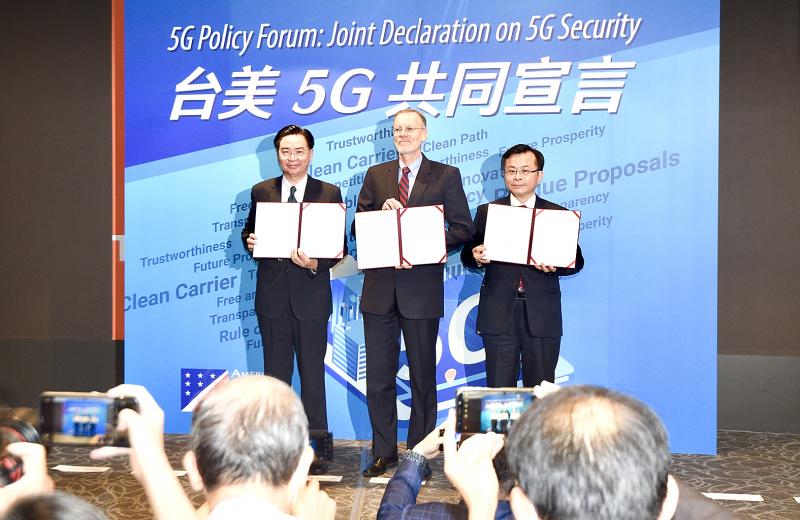
Photo: Peter Lo, Taipei Times
Washington aims to diversify and bring supply chains closer to end users, and ensure that countries like China do not hold supply chains hostage for political purposes, he said.
The US works with like-minded partners, including Taiwan, Japan and the EU, to develop new supply chains based on shared values, he added.
Taiwan Semiconductor Manufacturing Co’s (TSMC, 台積電) plans to boost investment in the US send “an unmistakable signal that the future of high-tech supply chains remains in the US-Taiwan nexus,” Christensen said.
Highlighting the importance of accountability, transparency, reciprocity, respect for the rule of law and human rights, he said: “We would call these American values. We would also call them Taiwan values.”
At another forum in Taipei yesterday, the AIT and the Taipei Economic and Cultural Representative Office in the US issued a joint declaration on 5G security, echoing the Prague Proposals.
The Prague Proposals resulted from a 5G security conference hosted by the Czech Republic in May last year, and attended by officials and experts from more than 30 countries.
The US’ 5G Clean Path, announced by US Secretary of State Mike Pompeo in April, is an end-to-end communication that does not use any transmission, control, computing, or storage equipment from extremely problematic, untrusted IT vendors, such as Huawei Technologies Co (華為) and ZTE Corp (中興), Christensen said at yesterday’s forum.
The joint statement said that 5G suppliers should provide products and services that enable fair competition and downstream development by the maximum number of market participants.
It listed four criteria for evaluating 5G suppliers: Network hardware and software suppliers should not be subject, without independent judicial review, to control by a foreign government; suppliers should be financed openly and transparently; they should have transparent ownership, partnerships and corporate governance structures; and they should exemplify a commitment to innovation and respect for intellectual property rights.
Taiwan, on the front line of cyberdefense, has pre-emptively excluded hardware and software with cybersecurity risks, Minister of Foreign Affairs Joseph Wu (吳釗燮) said.
All of Taiwan’s 5G suppliers — Chunghwa Telecom Co (中華電信), Taiwan Mobile Co (台灣大哥大), Far EasTone Telecommunications Co (遠傳電信), Asia Pacific Telecom Co (亞太電信) and Taiwan Star Telecom Co (台灣之星) — are listed in the US’ Clean Path, showing that Taiwan is a trustworthy partner, he said.
The joint declaration signals that Taiwan-US cooperation in protecting cybersecurity has become institutionalized, Wu said, adding that Taiwan would continue to work with the US and other like-minded countries to develop 5G network standards.
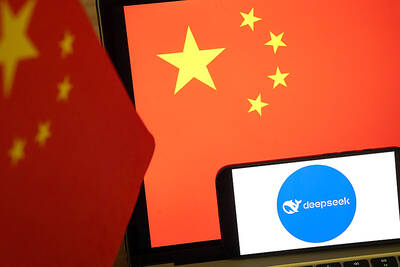
MISINFORMATION: The generated content tends to adopt China’s official stance, such as ‘Taiwan is currently governed by the Chinese central government,’ the NSB said Five China-developed artificial intelligence (AI) language models exhibit cybersecurity risks and content biases, an inspection conducted by the National Security Bureau (NSB) showed. The five AI tools are: DeepSeek, Doubao (豆包), Yiyan (文心一言), Tongyi (通義千問) and Yuanbao (騰訊元寶), the bureau said, advising people to remain vigilant to protect personal data privacy and corporate business secrets. The NSB said it, in accordance with the National Intelligence Services Act (國家情報工作法), has reviewed international cybersecurity reports and intelligence, and coordinated with the Ministry of Justice Investigation Bureau and the National Police Agency’s Criminal Investigation Bureau to conduct an inspection of China-made AI language
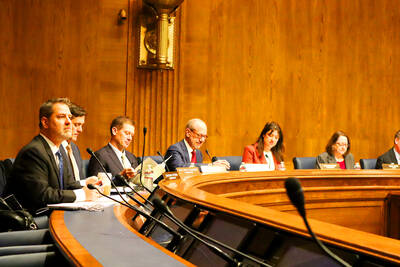
LIMITS: While China increases military pressure on Taiwan and expands its use of cognitive warfare, it is unwilling to target tech supply chains, the report said US and Taiwan military officials have warned that the Chinese People’s Liberation Army (PLA) could implement a blockade within “a matter of hours” and need only “minimal conversion time” prior to an attack on Taiwan, a report released on Tuesday by the US Senate’s China Economic and Security Review Commission said. “While there is no indication that China is planning an imminent attack, the United States and its allies and partners can no longer assume that a Taiwan contingency is a distant possibility for which they would have ample time to prepare,” it said. The commission made the comments in its annual
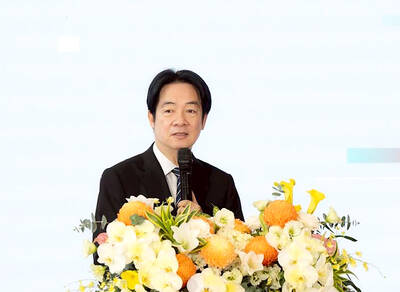
‘TROUBLEMAKER’: Most countries believe that it is China — rather than Taiwan — that is undermining regional peace and stability with its coercive tactics, the president said China should restrain itself and refrain from being a troublemaker that sabotages peace and stability in the Indo-Pacific region, President William Lai (賴清德) said yesterday. Lai made the remarks after China Coast Guard vessels sailed into disputed waters off the Senkaku Islands — known as the Diaoyutai Islands (釣魚台) in Taiwan — following a remark Japanese Prime Minister Sanae Takaichi made regarding Taiwan. Takaichi during a parliamentary session on Nov. 7 said that a “Taiwan contingency” involving a Chinese naval blockade could qualify as a “survival-threatening situation” for Japan, and trigger Tokyo’s deployment of its military for defense. Asked about the escalating tensions
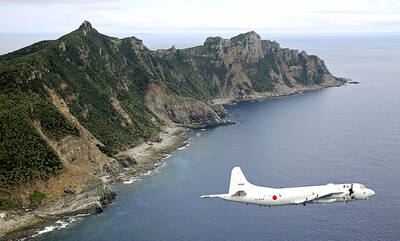
DISPUTE: A Chinese official prompted a formal protest from Tokyo by saying that ‘the dirty head that sticks itself out must be cut off,’ after Takaichi’s Taiwan remarks Four armed China Coast Guard vessels yesterday morning sailed through disputed waters controlled by Japan, amid a diplomatic spat following Japanese Prime Minister Sanae Takaichi’s comments on Taiwan. The four ships sailed around the Senkaku Islands — known as the Diaoyutai Islands (釣魚台) to Taiwan, and which Taiwan and China also claim — on Saturday before entering Japanese waters yesterday and left, the Japan Coast Guard said. The China Coast Guard said in a statement that it carried out a “rights enforcement patrol” through the waters and that it was a lawful operation. As of the end of last month,